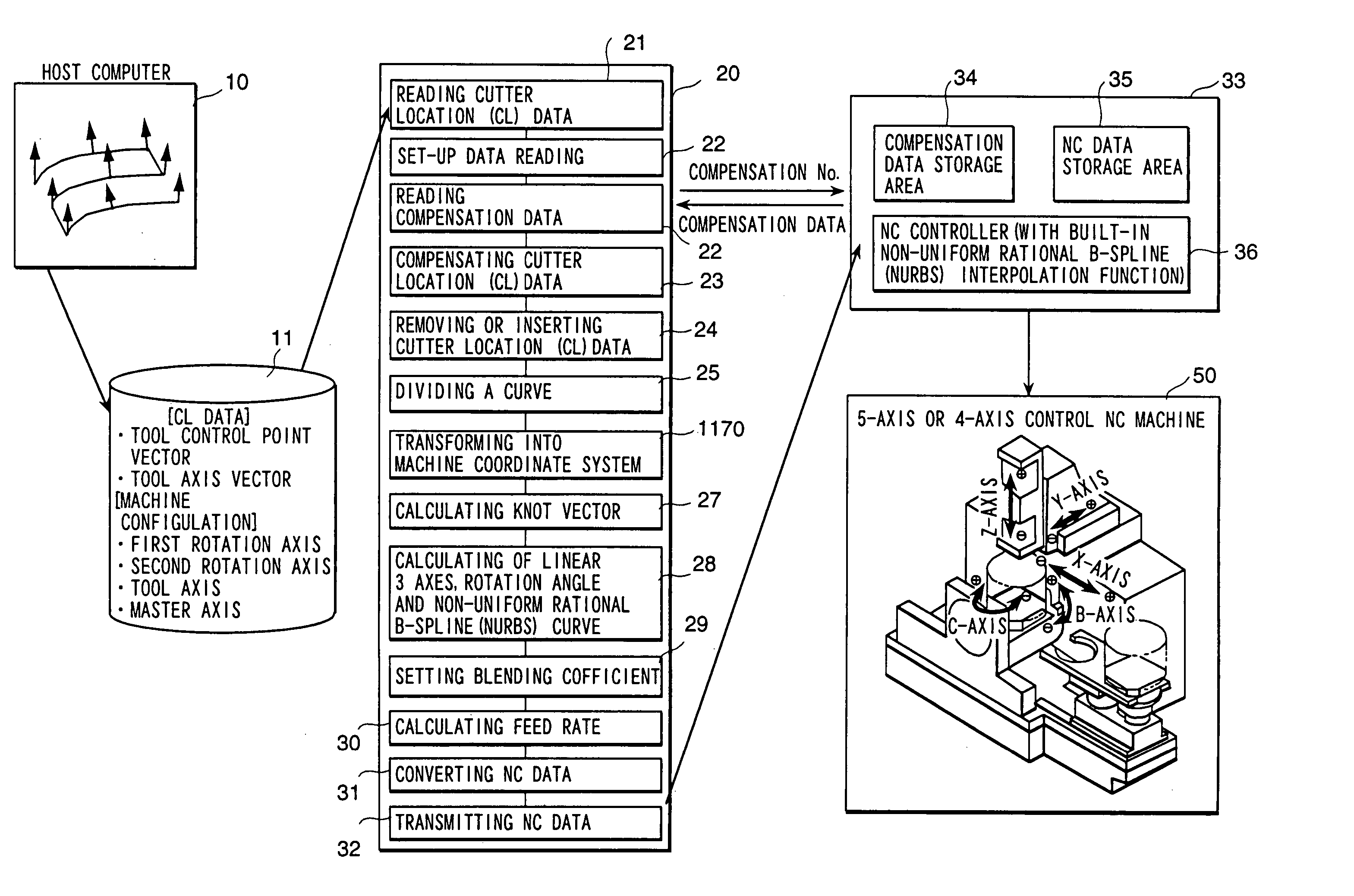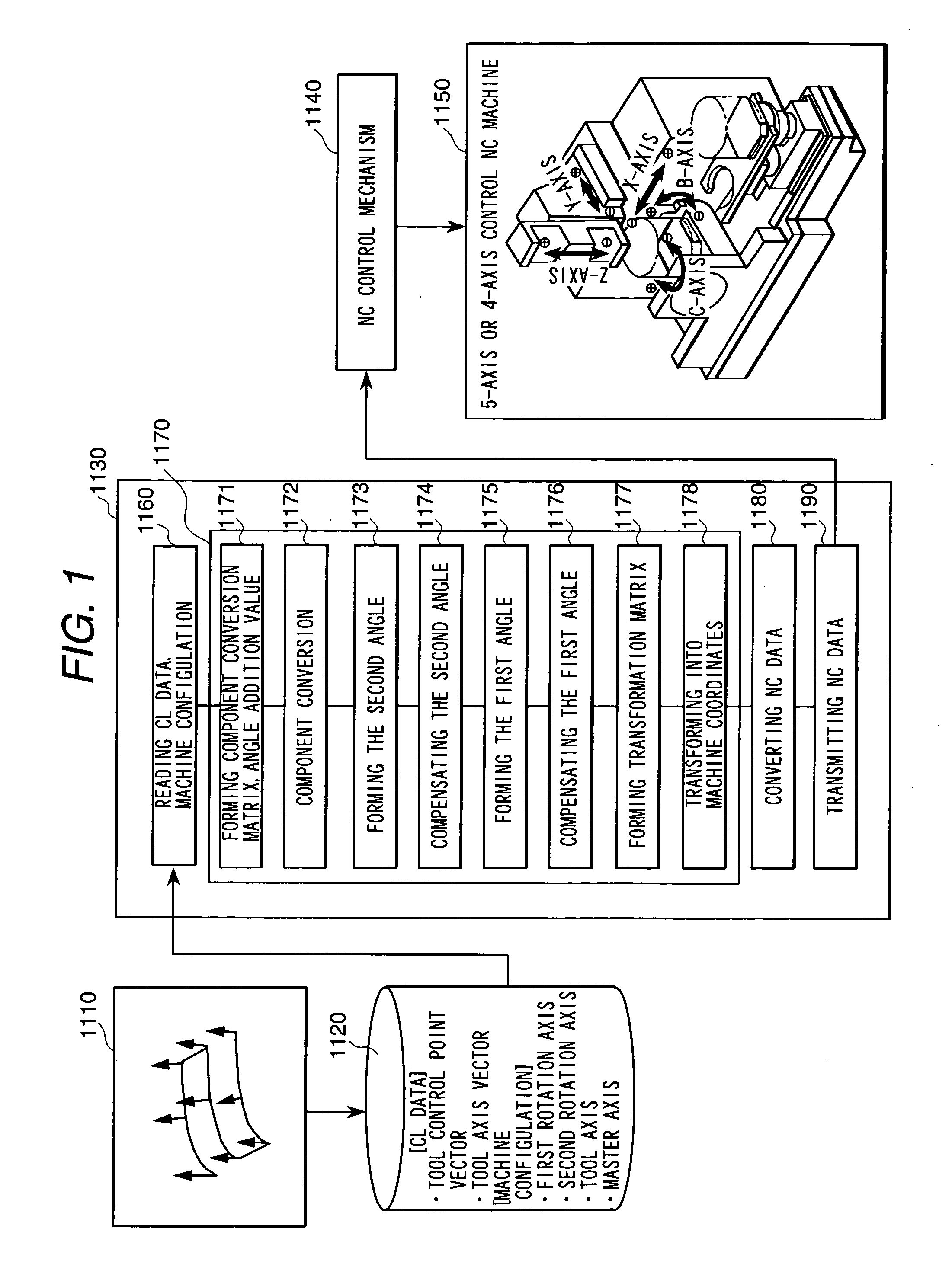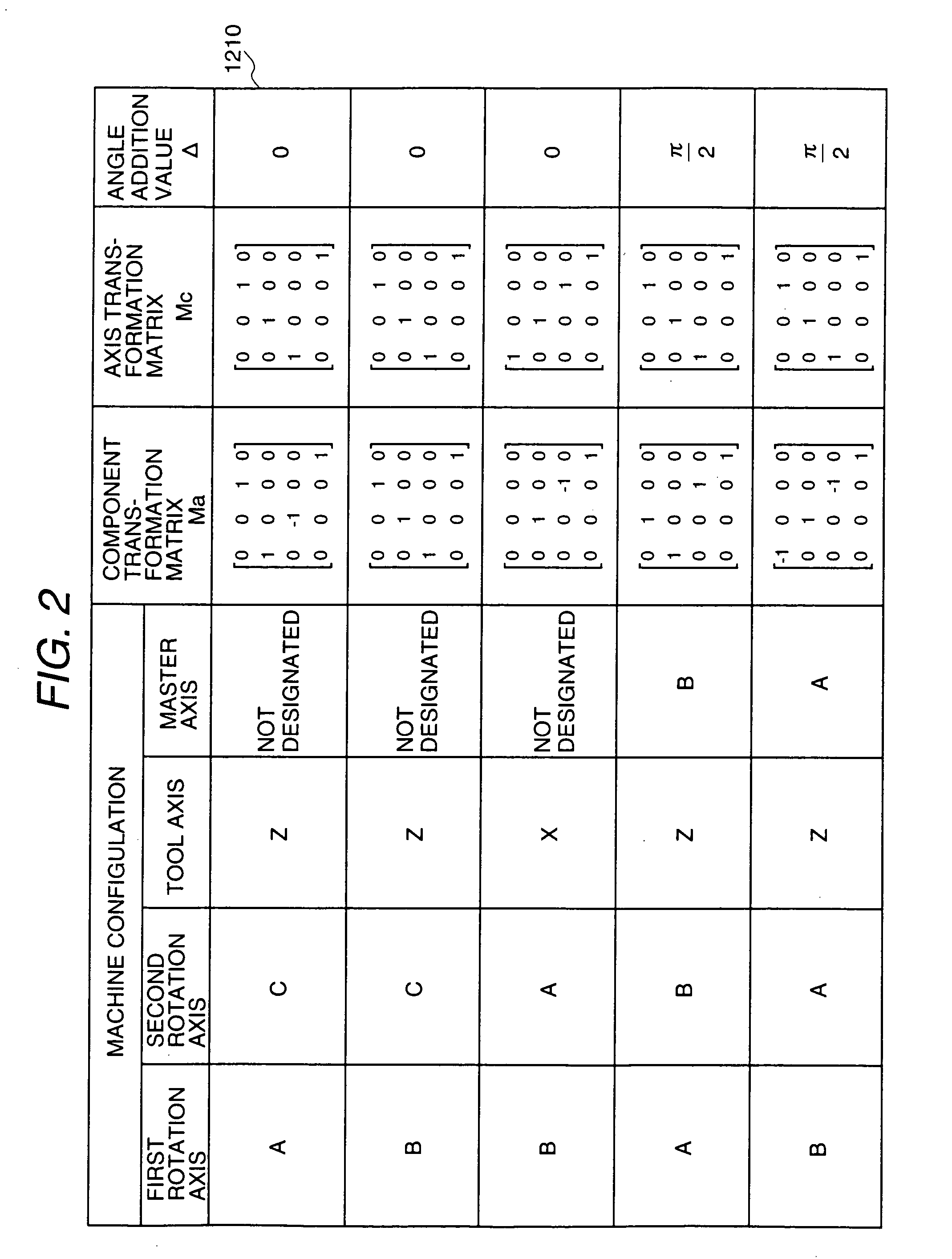Numerically controlled curved surface machining unit
a machining unit and numerical control technology, applied in the direction of electric programme control, program control, instruments, etc., can solve the problems of reducing the average feed rate by acceleration, affecting the smoothness of the machined surface, and requiring a lot of hand-finishing steps
- Summary
- Abstract
- Description
- Claims
- Application Information
AI Technical Summary
Problems solved by technology
Method used
Image
Examples
first embodiment
[0075] FIG. 1 shows the system configuration of a numerically controlled curved surface machining unit according to the present invention. More concretely, it show a configuration of NC host processor unit 1130 according to the present invention.
[0076] A CAM system 1110 working in a host computer uses CAD data of a finished shape defined by the CAD system, etc., forms CL (cutter location) data for a multi-axis controlled curved-surface machining unit 1150 (hereunder simply referred to as NC machine) and stores them in a CL data file 1120.
[0077] The CL data are composed of tool control point vectors (vectors of tool tip position, for example) and tool axis vectors (tool axis direction vectors, for example) and formed in a workpiece coordinate system defined by the CAM system. A configuration of the machine is expressed by character signs indicating a first rotary axis, second rotary axis, tool axis and master axis, of the NC machine 1150.
[0078] The NC post processor unit 1130 is comp...
embodiment 2
[0109] FIG. 5 is a block diagram showing a system configuration of a second embodiment of a numerically controlled curved surface machining unit according to the present invention.
[0110] The second embodiment is an embodiment in which the machine coordinate converting means of the numerically controlled curved-surface machining unit described in the previously mentioned US application or JP 2001-92516 is replaced by the coordinate converting means 1170 inside the post processor unit 1130 in FIG. 1.
[0111] Since the coordinate converting means 1170 can avoid a rapid change in angle by limit on computer installation, in the second embodiment also it is possible to prevent the phenomenon that each axis rapidly rotates at a high speed and the phenomenon that a tool moves to an unintended position and to perform such machining that tool breakage, machine breakage, too much cutting and too less cutting are less.
[0112] As for the means 1171 to 1190 of the machine coordinate converting means...
PUM
 Login to View More
Login to View More Abstract
Description
Claims
Application Information
 Login to View More
Login to View More - R&D
- Intellectual Property
- Life Sciences
- Materials
- Tech Scout
- Unparalleled Data Quality
- Higher Quality Content
- 60% Fewer Hallucinations
Browse by: Latest US Patents, China's latest patents, Technical Efficacy Thesaurus, Application Domain, Technology Topic, Popular Technical Reports.
© 2025 PatSnap. All rights reserved.Legal|Privacy policy|Modern Slavery Act Transparency Statement|Sitemap|About US| Contact US: help@patsnap.com



